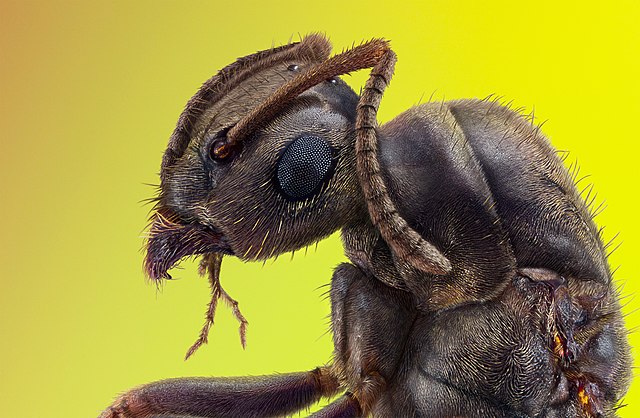
An astounding twenty quadrillion ants, or 2.5 million for every human, are thought to exist worldwide, according to scientists. This is the most detailed evaluation of the ant population to date. Ants are insects that have colonized practically every area of the planet.
Given how common these active and gregarious insects are and the fact that they have survived since the time of dinosaurs—as the earliest known ant fossil dates back to around one hundred million years ago to the Cretaceous Period—it should come as little surprise that they are so good at survival.
In the upcoming months, the number of people on earth is expected to surpass eight billion. That’s a modest accomplishment when compared to ants.
Patrick Schultheiss, an entomologist and the study’s co-lead author from the University of Hong Kong and the University of Würzburg in Germany said, “Ants certainly play a very central role in almost every terrestrial ecosystem. They are very important for nutrient cycling, decomposition processes, plant seed dispersal and the perturbation of soil. Ants are also an extremely diverse group of insects, with the different species fulfilling a wide range of functions. But most of all, it is their high abundance that makes them key ecological players.”
An Estimated 12,000 Ant Species
An estimated twelve thousand different species of ants have been identified, most of which are black, brown, or red with bodies divided into three sections. Typically found in soil, leaf litter, or dead plants, ants can range in size from four hundredths of an inch to roughly 1.2 inches long. Sometimes, they might also be found in human kitchens.
As any picnicker is aware, ants are native to almost all of the world’s countries, with the exceptions of Antarctica, Greenland, Iceland, and several island nations. Their nearest relatives are bees and wasps.
Sabine Nooten, an insect ecologist and research co-author from the Universities of Würzburg and Hong Kong said, “I was amazed that the ants’ biomass was higher than that of wild mammals and birds combined, and that it reaches twenty percent of the human biomass. That gives you an understanding of the scale of their impact.”
Nooten also made reference to Strumigenys, the widespread ant species with long, spiked mouthparts that hunt small invertebrates. “I find the enormous diversity of ants fascinating. They can be tiny or huge […with] the most bizarre adaptations.”
Analysis undertaken by researchers was based on 489 investigations of ant populations from all seven continents.
Schultheiss said, “Our dataset represents a massive collecting effort of thousands of scientists. We were then able to extrapolate the number of ants for different regions of the world and estimate their total global number and biomass.”
Far Higher Ant Populations in Tropical Areas
It was discovered that tropical places had far higher ant populations than other areas with forests and dry land having more ants than cities.
Schultheiss said, “There are certain parts of the world where we have little data and we cannot reach reliable estimates for all continents. Africa is one such example. We have long known that it is a very ant-rich continent but also very under-studied.”
Schultheiss added, “Some ants can certainly be very annoying, but that’s a very human-centered perspective. Most ants are actually highly beneficial, even to us humans. Think about the amount of organic matter that twenty quadrillion ants transport, remove, recycle and eat. In fact, ants are so essential for the smooth working of biological processes that they can be seen as ecosystem engineers. The late ant scientist E.O. Wilson once called them ‘the little things that run the world.'”
Ants often live in colonies, whose populations might even be in the millions. These colonies are organized, for example, into groups of workers, soldiers, and queens. The workers, who are all female, look after the larger queen and her young, keep the nest clean, and go foraging for food. Males die after mating with queens.
See all the latest news from Greece and the world at Greekreporter.com. Contact our newsroom to report an update or send your story, photos and videos. Follow GR on Google News and subscribe here to our daily email!



